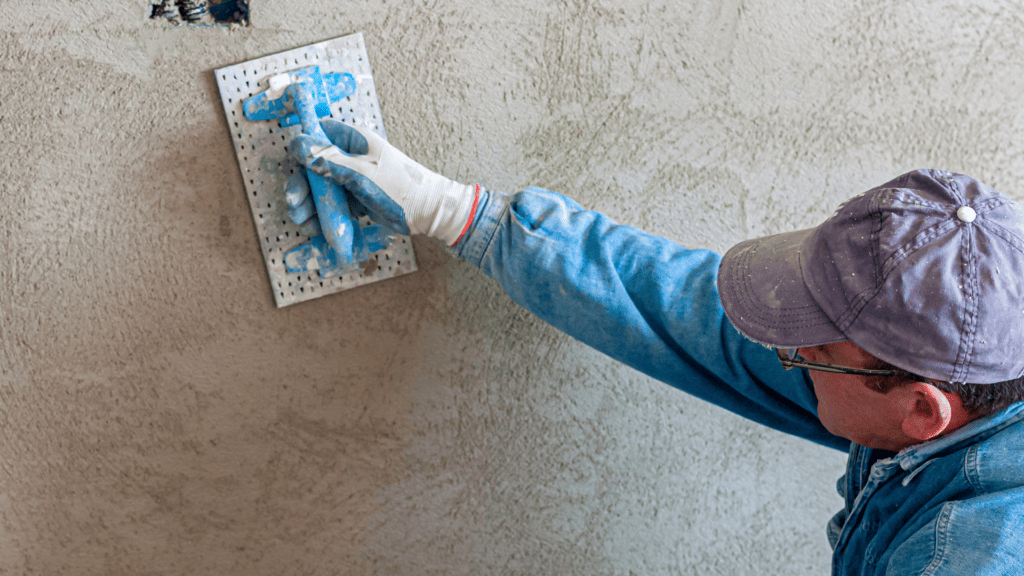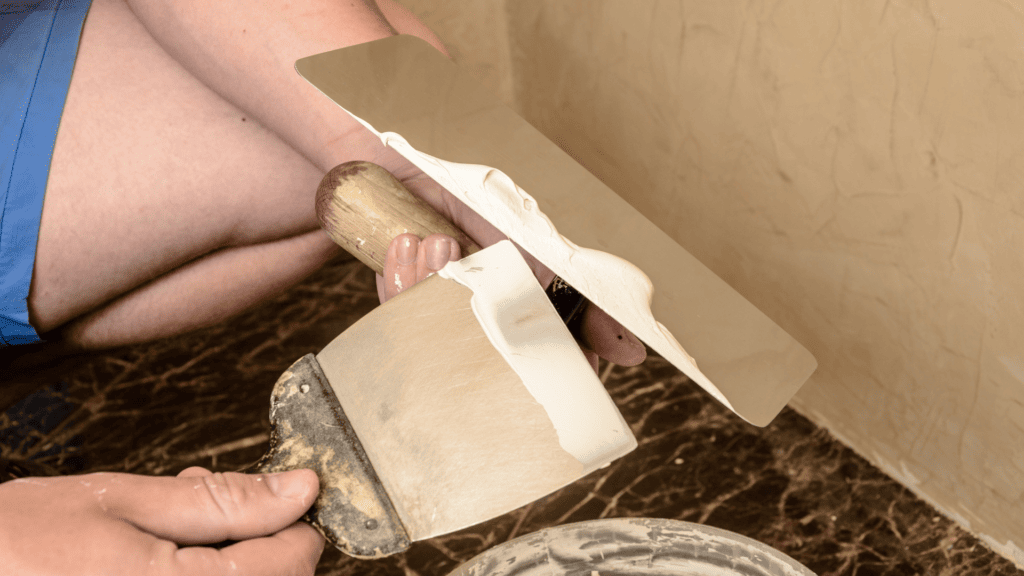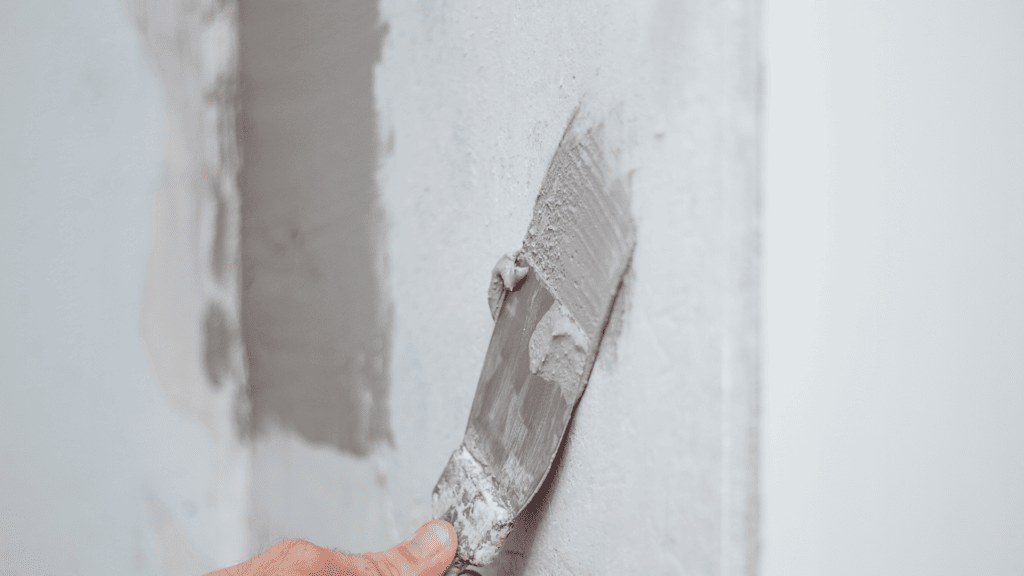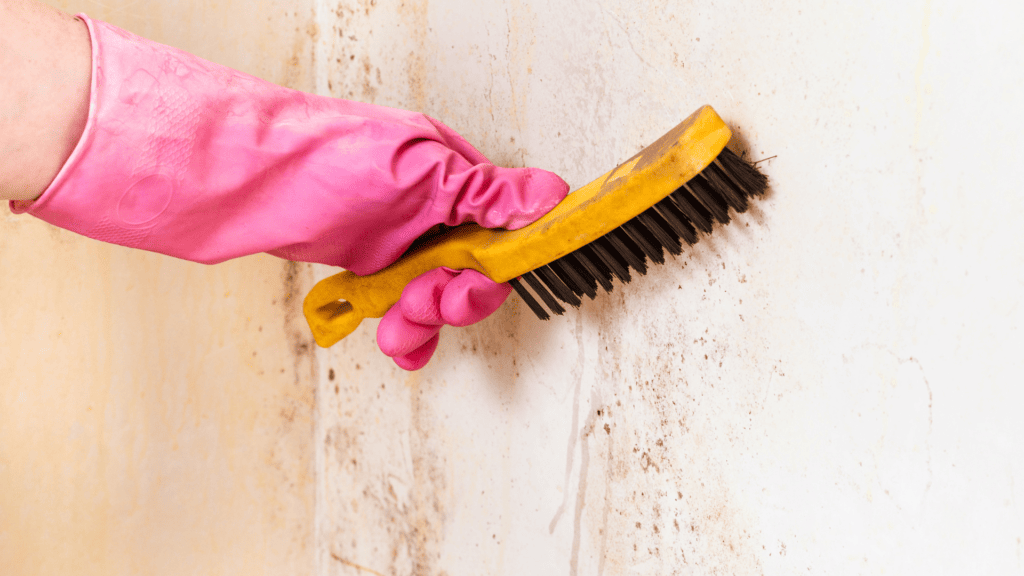The timeless elegance of Venetian plaster has captivated viewers from the Renaissance's magnificent palaces to today's elegant contemporary interiors. This essay delves into the allure of Venetian plaster and examines its many uses and advantages. Anyone interested in interior design or looking for a more refined wall finish can benefit from this exploration of Venetian plaster. Get set to go on a journey of learning as we reveal the many reasons why Venetian plaster is the superior choice for renovating any space.
What's Venetian Plaster?
The decorative coating known as "Venetian plaster" has its roots in 15th-century Venice, Italy. This ornamental method, also known as wall stucco, is used on walls and ceilings and has a sheen and texture reminiscent of polished marble.
It's a coating to finish and decorate interior and outdoor walls and ceilings. Lime, powdered marble, plaster, and natural colours comprise its components.
Walls in Venetian style can be plastered in a rainbow of hues. Its resistance to walls and ceilings makes it stand out, but its uses go far beyond aesthetics. A visual style typified by a glossy, velvety finish.
A Few Benefits Of Using Venetian Plaster
Easy To Maintain
It's a great low-maintenance alternative to genuine stone or tiles in bathrooms, and it frames a high-end finish with no grout lines. Scuff marks may be wiped with a damp cloth and mild detergent, making maintenance straightforward.
Organic, Non-Toxic Substance
Unlike paints and sealants, Venetian plaster does not off-gas hazardous Volatile Organic Compounds (VOCs). Without worrying about their safety, your contractors and tradespeople can go on to the next stage of any project. The anti-fungal properties of lime further aid in halting the spread of potentially dangerous mould.
Durable
Once it has dried, Venetian plaster is among the most long-lasting construction materials available. It might last a lifetime in your bathroom if cared for properly.
The versatility and adaptability of Venetian plaster have led to a meteoric rise in appeal.
Soft, Breathable Fabric
Most varieties of Venetian plaster are permeable. Thus, they can be utilised even in damp environments. This polished plaster hardens and dries rapidly, preventing water from seeping under the surface. This protects Venetian plaster from water damage to retain its attractive appearance for years.
Overlay Onto Preexisting Tiles
Without the hassle of tearing up floors and walls, you may achieve any desired aesthetic with Venetian plaster. Consider applying a Venetian plaster finish over the existing tiles to save time and money on a bathroom remodel.
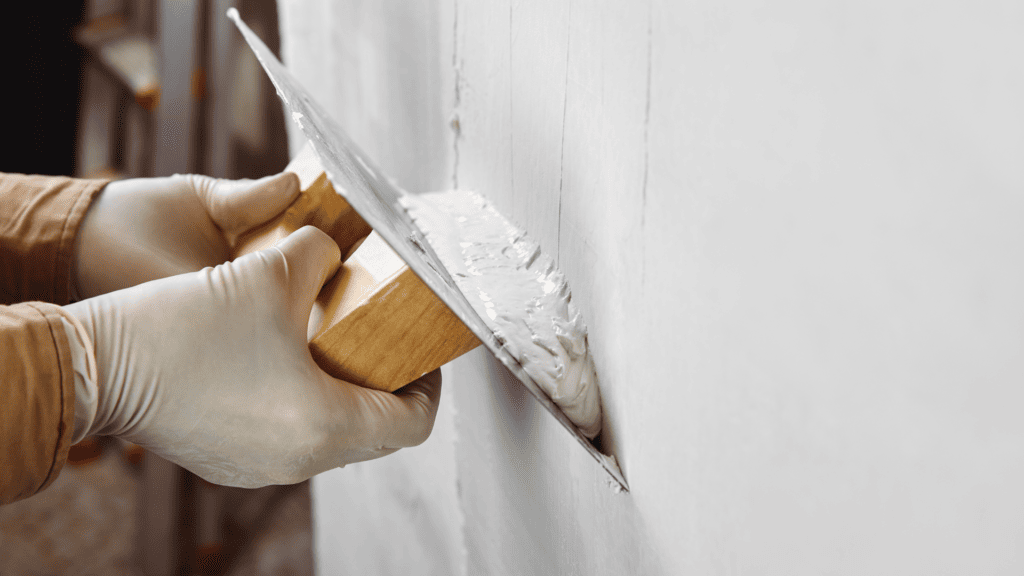
Where Can You Use Venetian Plaster?
Venetian plaster can be used for exterior applications but is often reserved for inside settings. Common places for this style include living rooms, bathrooms, and corridors. Although it is feasible to cover all the walls, we suggest focusing on just one to maximise the effect. In addition, it is recommended that the wall be painted a darker shade than the rest of the walls before applying the Venetian plaster.
It's a good idea to put Venetian plaster on the bedroom walls. This ornamental method is also very visually appealing but rare in bedrooms. Here, lighter shades predominate. The white, beige, or grey paint on the focal wall of a bedroom can make a dramatic aesthetic statement.
It is also commonly used on the ceiling in spaces with high ceilings. By employing this method, you may make a space appear taller and cosier than ever before by creating a visual "nearness" to the floor.
Advice On Applying Venetian Plaster
In the following, we'll explain how to properly apply Venetian plaster. The advice is only relevant for natural lime plaster, not manufactured varieties.
Get The Right Equipment
Has the adage "a bad workman blames his tools" ever crossed your mind? The statement is appropriate while working with Venetian plaster. The ease with which you can apply and smooth the plaster depends on the tools you employ. You'll also need 400-600 grit sandpaper, the plaster, and a steel trowel or 6-inch drywall knife. Throw a dust sheet over the floor to protect it. You, too, should make as much room as feasible.
Preparation
The walls must be devoid of any flaws. Holes, if present, should be patched. Rough surfaces should be sanded. The presence of grime and grease necessitates a thorough cleaning. Plaster works best when applied on a clean, smooth surface. You can plaster right over painted walls, but you'll need to sand off the glossiness of the paint first if it's glossy. Suppose you want to avoid tearing into the plaster when applying it; round off the corners of your walls with sandpaper. This is a typical error made by the general public.
The First Coat
While subsequent coatings matter for surface finish, the initial coat determines how much work must go to achieve a perfect finish. Apply a thin coat of plaster using your drywall knife, starting in one of the room's corners. It's perfectly normal if you can see through the plaster to the wall beyond. Don't stop slapping on the bandage. Dilute but distribute evenly. The goal is a completely smooth surface. After painting the wall, give it at least 16 hours to dry.
The Second Coat
The first coat is effectively filled in by the second. If the first coat went on smoothly, the second should also go on evenly. The second coat should be applied similarly, beginning in a corner. Spread it evenly and thinly. To ensure uniform coverage, alternate between long and short strokes. Once you've finished painting the wall, give it at least 24 hours to cure before applying a second coat. Could you get back to us tomorrow?
The Third Coat
While a third coat isn't always required, a faultless finish is required for high-end applications. If you like the look of the plaster already, skip this. Two coatings of Venetian plaster are needed to ensure the plaster's longevity. Apply a third coat of plaster in the same manner as the second if you wish. You should begin with the furthest corner and move inward.
Polishing
You can use either hand-polish or machine-polish Venetian plaster. The truth is that machine polishing is significantly quicker and results in a higher-quality finish. Traditional hand-polishing yields the same or worse results than modern machinery. You can use a rotary polisher instead of plaster finishing equipment for automobile bodywork. You only need a special pad for this. The plaster must be balanced. Get an even shine by taking your time.
How To Repair Damaged Venetian Plaster?
Cracks and fissures in the wall or ceiling are signs that Venetian plaster has deteriorated over time and needs to be fixed to prevent further harm. A gradual fade of pigment might exacerbate these issues.
Substrate damage, for whatever reason, is not easily fixed and requires the expertise of a trained technician. Depending on the extent of the damage, we shall detail below how to repair Venetian plaster.
Painting Over A Faded Venetian Plaster Wall
Venetian plaster fades in colour with time. The answer is straightforward if the only issue is a dulling of the colour: paint over it.
Repairing Chips And Cracks In Venetian Plaster Using Putty Or Acrylic Paint
Use acrylic paint or putty to patch any holes or cracks in the wall or ceiling. The surface was smoothed until it was uniform in texture. Both the fixed and unrepaired portions, so that there are no stark differences. Then, apply it again the same way you used Venetian plaster the first time.
Tool For Repairing Larger Holes And Cracks In Venetian Plaster
However, if the cracks or fissures are bigger, or if a hole has been produced in the surface, the damaged section of the Venetian plaster wall will need to be removed using a chisel and mallet. It's time to reapply the product once you've ensured no more flaws.
Venetian Plaster Wall Removal Instructions
Do you have Venetian plaster on your walls and are looking for a solution to remove it? You can choose from several different methods to update the surface's aesthetics. Take note:
Take Off Any Wax Or Varnish Before Using On Venetian Plaster
It is vital to remove wax or varnish if the applicator used it when they coated the wall or ceiling with this ornamental approach. How? Using a turpentine, solvent, or similar product on a wet cloth.
Rubbing Sand Into A Surface
Sanding the surface is the first step in removing the Venetian plaster finish. Sanding the surface properly will allow the pores to open up, ensuring proper paint adherence.
To Get Rid Of The Venetian Plaster, Use A Primer.
Then, after sanding, apply many coats of primer, which, together with the sanding, will help the fresh paint or decorative coating stick. This guarantees a durable result.
Modify For New Paint
Not all experts agree that sanding the wall or ceiling again before painting is necessary. Either case, you'll need to apply the paint or a new coating to substitute for the Venetian plaster.
The Quick And Easy Way To Clean Your Venetian Plaster Walls
Cleaning your Venetian plaster wall periodically can keep it smooth and shiny. We recommend using a few select wax-based solutions to keep your walls mould- and mildew-free over time. On the other hand, regular household items can also be used. Take note!
Use A Neutral Soap And Hot Water
Clean the wall or ceiling with hot water and neutral soap using a clean sponge or cloth until no stains or dust remain.
Let It Air Dry
After washing the wall or ceiling thoroughly, let it air dry.
Use Some Wax
Use a specific gauze to apply varnish to the Venetian plaster wall. Spread the varnish all over the area.
Put On A Woollen Glove And Run It Over The Venetian Plaster
Use circular motions to disperse the newly applied wax. This will clean the Venetian plaster and restore its signature sheen.
Conclusion
Venetian plaster, a decorative coating originating from 15th-century Venice, Italy, is a versatile and durable wall finish that offers numerous benefits. It is easy to maintain, with no grout lines and no harmful VOCs. It is also organic, non-toxic, and durable, making it suitable for indoor and outdoor use. Venetian plaster is permeable, making it suitable for damp environments and preventing water seeping under the surface. It can be applied over existing tiles to achieve desired aesthetics without tearing up floors and walls.
Venetian plaster is commonly used in living rooms, bathrooms, and corridors, but it is best applied to one wall to maximize its effect. It is recommended to paint the wall a darker shade than the rest of the walls before applying the plaster. It is also popular in bedrooms, where lighter shades can make a dramatic aesthetic statement.
The second coat should be applied similarly, starting in a corner, and spread evenly and thinly. After 24 hours, give the wall a second coat. A third coat is not always necessary, but a faultless finish is required for high-end applications. Two coatings of Venetian plaster are needed to ensure its longevity.
To repair damaged Venetian plaster, paint over a faded wall or ceiling, use acrylic paint or putty to patch any holes or cracks, smooth the surface, and apply it again. If the cracks or fissures are larger or have holes, remove the damaged section using a chisel and mallet. Reapply the product once the flaws have been removed.
To remove Venetian plaster, remove any wax or varnish using a turpentine, solvent, or similar product on a wet cloth. Sand the surface properly to allow pores to open up, ensuring proper paint adherence. Apply primer and multiple coats of paint or a new coating to ensure a durable result.
Cleaning your Venetian plaster walls periodically is essential for maintaining its smooth and shiny appearance. Use wax-based solutions or regular household items, such as neutral soap and hot water, to keep the walls mold- and mildew-free. Apply varnish using a specific gauze and use a woollen glove to disperse the newly applied wax, restoring its signature sheen.
Content Summary
- Venetian plaster is a timeless and elegant wall finish with many benefits.
- It originated in 15th-century Venice and has a polished marble-like texture.
- Venetian plaster is easy to maintain and requires low maintenance.
- It is an organic and non-toxic substance, free from harmful VOCs.
- The plaster is highly durable and can last a lifetime with proper care.
- It is breathable and suitable for damp environments.
- Venetian plaster can be applied over preexisting tiles, saving time and money.
- It is commonly used in living rooms, bathrooms, and corridors.
- Venetian plaster can be applied to bedroom walls for a dramatic aesthetic statement.
- It can be used on ceilings to create the illusion of height and coziness.
- Proper equipment and preparation are essential for applying Venetian plaster.
- The first coat sets the foundation for achieving a perfect finish.
- The second coat fills in any imperfections and should be evenly applied.
- A third coat can be applied for a flawless high-end finish.
- Polishing can be done by hand or with a machine for a superior result.
- Cracks and fissures in Venetian plaster can be repaired using putty or acrylic paint.
- Larger holes and cracks may require removing the damaged section and reapplying the plaster.
- Wax or varnish should be removed before attempting to remove Venetian plaster.
- Sanding the surface and applying primer are necessary steps for removing the plaster.
- Venetian plaster can be replaced with paint or a new decorative coating.
- Regular cleaning of Venetian plaster walls is recommended.
- Hot water and neutral soap can be used for cleaning.
- Allow the walls to air dry after cleaning.
- Applying wax or varnish can help maintain the sheen of Venetian plaster.
- Circular motions with a woollen glove can distribute the wax and clean the plaster.
Frequently Asked Questions About Venetian Plaster
Yes, Venetian plaster is a natural material that allows walls to breathe. It helps regulate humidity and prevents the growth of mould and mildew, promoting healthier indoor air quality.
Yes, one of the advantages of Venetian plaster is its ability to conceal minor wall imperfections, such as hairline cracks or uneven surfaces, creating a smooth and flawless appearance.
Yes, Venetian plaster is considered environmentally friendly. It is made from natural materials, emits no harmful VOCs (volatile organic compounds), and can be recycled.
Yes, Venetian plaster can contribute to improving the acoustics of a space. Its textured surface helps to diffuse sound waves, reducing echo and creating a more balanced auditory experience.
Yes, the use of Venetian plaster can add value to a property due to its luxurious appearance, durability, and the unique and sophisticated atmosphere it creates.

